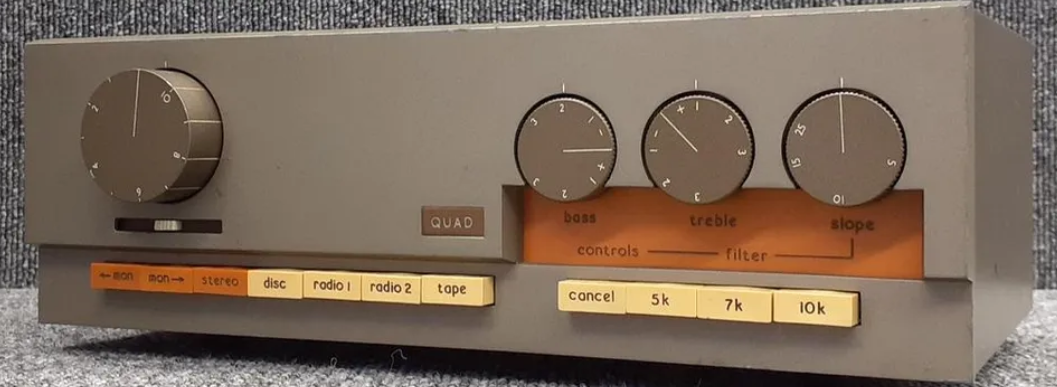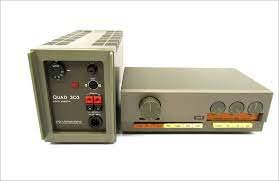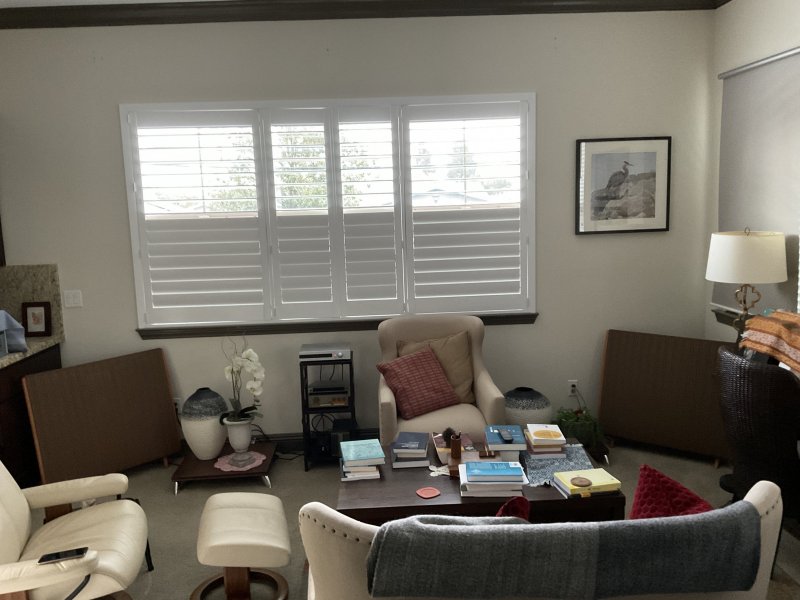We often forget how wonderful antique hi fi can sound, as we follow with bated breath each little wrinkle of progress in the high end audio industry. Yet, with the possible exception of streaming and high resolution digital recording, very little actual progress has been made in the past 40-50 years that‘s of much significance, IMHO!
Case in point: I am currently listening to Quad’s legendary solid state electronics — the famous 33 (orange faceplate) and 303 (used by none other than Pink Floyd for their recordings) solid state amplifier Into the greatest-hi-fi-product-of-all time, the Quad ESL 57s. The system is set up in a guest room, in a location where most speakers would fail (KHorn style, against each corner, spread wide apart, and I am listening in the near field). The 33/303 are light, compact, and run cool. The 33 has fabulous tone controls, as was the case for all of Quad’s preamps. Peter Walker firmly believed in tone controls. Quad’s logo was “the closest approach to the original sound”. Walker believed properly designed tone controls got you closer to the actual sound, rather than so-called purist designs.
Listening to this setup with a modern streaming source, it sound stunningly good. Let’s just say it would put to shame many modern speakers and electronics, most of which don’t have the same well-thought out design. The 303 power amplifier, which was designed to drive the 57s, after Quad’s famous Quad II tube monoblocks, used an extremely clever “triples” output transistor configuration and was unconditionally stable into any load. It is also completely regulated at the output stage. The sound is unlike any other solid state amplifier I have heard. It is, to use a cliche, “tube” like in its sound.
I had the 33/303 professionally restored with all new caps and transistors upgraded. The 57s are original with no upgrades. They just function day in day out with no complaints.
We forget how good hi fi was 60 years ago. Sometimes it takes listening to a system like this to remind us that antique high fidelity systems can still match anything made today.

Case in point: I am currently listening to Quad’s legendary solid state electronics — the famous 33 (orange faceplate) and 303 (used by none other than Pink Floyd for their recordings) solid state amplifier Into the greatest-hi-fi-product-of-all time, the Quad ESL 57s. The system is set up in a guest room, in a location where most speakers would fail (KHorn style, against each corner, spread wide apart, and I am listening in the near field). The 33/303 are light, compact, and run cool. The 33 has fabulous tone controls, as was the case for all of Quad’s preamps. Peter Walker firmly believed in tone controls. Quad’s logo was “the closest approach to the original sound”. Walker believed properly designed tone controls got you closer to the actual sound, rather than so-called purist designs.
Listening to this setup with a modern streaming source, it sound stunningly good. Let’s just say it would put to shame many modern speakers and electronics, most of which don’t have the same well-thought out design. The 303 power amplifier, which was designed to drive the 57s, after Quad’s famous Quad II tube monoblocks, used an extremely clever “triples” output transistor configuration and was unconditionally stable into any load. It is also completely regulated at the output stage. The sound is unlike any other solid state amplifier I have heard. It is, to use a cliche, “tube” like in its sound.
I had the 33/303 professionally restored with all new caps and transistors upgraded. The 57s are original with no upgrades. They just function day in day out with no complaints.
We forget how good hi fi was 60 years ago. Sometimes it takes listening to a system like this to remind us that antique high fidelity systems can still match anything made today.




